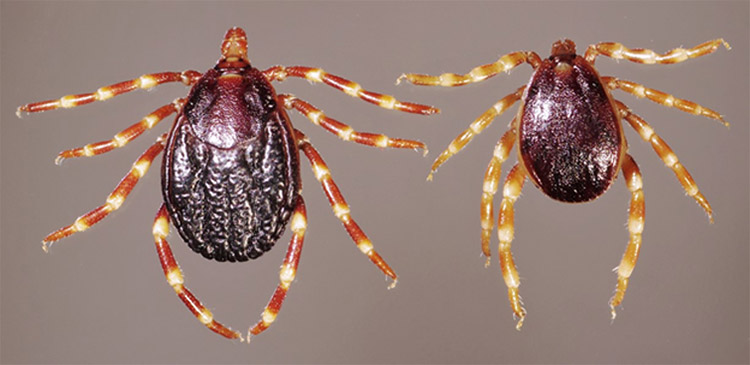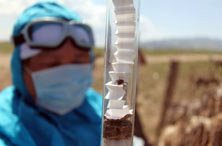 Hyalomma ticks are the main vector for CCHF (Photo: Daktaridudu/Wikimedia Commons)
Hyalomma ticks are the main vector for CCHF (Photo: Daktaridudu/Wikimedia Commons)
Crimean-Congo haemorrhagic fever (CCHF) is the most widespread tick-borne viral disease affecting humans. The causative agent, CCHF virus (a Nairovirus of the Bunyaviridae family) is transmitted mainly by ticks (Hyalomma) and livestock animals. Human-to-human transmission can occur, usually in the health care setting, resulting from close contact with the blood, secretions, organs or other bodily fluids of infected persons. The disease begins with a sudden onset of influenza-like symptoms which may progress to severe bleeding and can be fatal (current case fatality rate is 10-40%) if not treated.
In the Eastern Mediterranean Region, sporadic human cases and outbreaks of CCHF have been reported, in the past, from Afghanistan, Islamic Republic of Iran, Iraq, Kuwait, Oman, Pakistan, Saudi Arabia, Sudan and the United Arab Emirates. So far, five genotypes of CCHF virus (genotype-1, 2, 3, 4 and 7) have been detected in the countries of WHO's Eastern Mediterranean Region. In some countries, the trend of CCHF has been steadily increasing in recent years. WHO is working with partners to support CCHF surveillance and outbreak response activities.
Containing and preventing outbreaks is difficult because of the lack of a safe and effective vaccine, widespread presence of tick vectors, and the fact that the infection mostly goes unnoticed in domestic animals. The focus is therefore on awareness and education efforts with regards to reducing transmission risk. Management of CCHF in humans mainly consists of treating symptoms, although the antiviral drug ribavirin has been used to treat the infection with apparent benefit.
WHO is working with partners to support surveillance, diagnostic capacity and outbreak response activities in the Region, as well as documentation to help disease investigation and control.
Information resources
 Photo: Semantic Scholar
Photo: Semantic Scholar
Protect yourself from Crimean-Congo haemorrhagic fever
Related topics
 Photo: Wikimedia commons/ Friend of Darwinek
Photo: Wikimedia commons/ Friend of Darwinek
Pandemic- and epidemic-prone diseases



